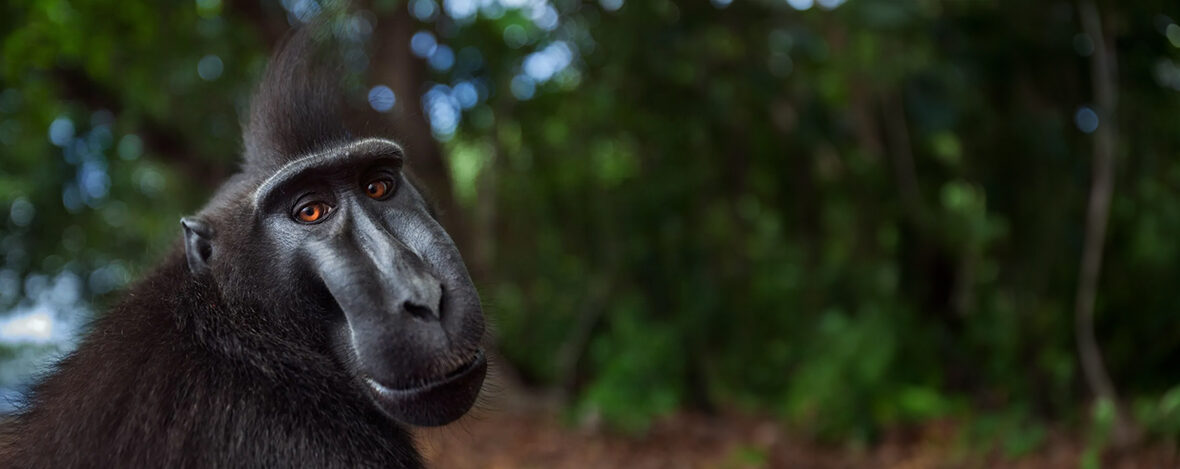
The celebes crested macaque, aka Sulawesi crested macaque, crested black macaque, black ape, Yaki, or Wolai, can only be found on the island of Pulau Bacan, Tangoko Reserve, as well as the northeastern part of Sulawesi island, in Indonesia. These fascinating primates prefer tropical upland and lowland rainforest habitats, as well as agricultural areas. Unfortunately, they face the threats of habitat loss and destruction at the hands of farming, logging, mining, and quarrying; hunting, for bush meat; and trapping, as pests. The IUCN lists these critters as Critically Endangered, and their populations are decreasing.
First the Stats…
Scientific name: Macaca nigra
Weight: Up to 23 lbs.
Length: Up to 24 inches
Lifespan: Up to 20 years
Now on to the Facts!
1.) These critters, like all macaques, are diurnal (active during the day).
2.) A group of primates is called a barrel, cartload, tribe, troop, or wilderness.
3.) Troops can contain upwards of 97 individuals.
4.) They travel up to 1.5 miles a day in search of food and shelter.
5.) Roughly 60% of their day is spent feeding, foraging, and moving about.
But wait, there’s more on the celebes crested macaque!
6.) Being very territorial, troops also spend part of their time defending their territory.
7.) To show satisfaction and/or submission males display a grimace or smack their lips. Likewise, aggression is shown by chasing, yawning, staring while gaping (showing an open mouth), and grinning with their mouth closed.
Did you know…?
When greeting one another they will typically hug and smell each other’s rectum (butt).
8.) Celebes crested macaques are predominantly frugivorous (eat fruit) herbivores (eat plant matter) that consume a variety of fruit (with a main emphasis on figs). They also feast on up to 145 known species of plants and invertebrates. Whenever fruit is hard to come by, then leaves, stems, and shoots are feasted upon.
9.) These critters are polygynandrous (promiscuous – males and females have multiple partners).
10.) Females mate approximately every 18 months.
But wait, there’s still more on the celebes crested macaque!
11.) The female undergoes up to a 5.5 month gestation (pregnancy) that yields a single infant.
12.) At around 4 months of age, the juvenile starts to explore, spending less and less time with mom.
Did you know…?
Seeing as these primates technically have, albeit small, tails they are considered monkeys, not apes.
13.) The infant is weaned at up to 1 year of age.
14.) Unfortunately, their meat is considered a delicacy, so hunting runs rampant.
15.) Due to their primarily fruit-based diet, these macaques are important seed dispersers.
But wait, there’s still a tad more on the celebes crested macaque!
16.) Macaques, in general, are considered to be highly intelligent and have an advanced understanding of objects, spacial acuity, a recognition of numbers, as well as cause and effect. Wild macaques are also known to be innovative and utilize tools, like sticks to extract insects from tree bark.
17.) Leopards, tigers, snakes, and crocodiles are their primary natural predators. Humans are their greatest threat though.
Now a Short Celebes Crested Macaque Video!
Be sure to share & comment below! Also, check out the Critter Science YouTube channel. Videos added regularly!
Want to suggest a critter for me to write about? Let me know here.
Some source material acquired from: Wikipedia & IUCN
Photo credit: Palm Oil Detectives



